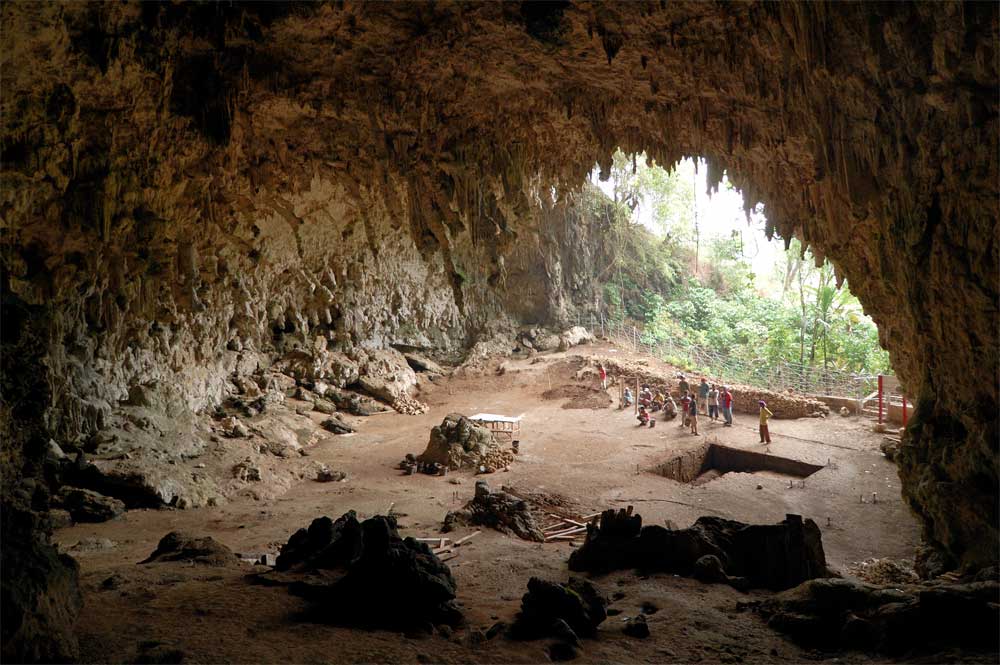The Real 'Hobbit' Had Larger Brain Than Thought

The brain of the extinct "hobbit" was bigger than often thought, researchers say.
These findings add to evidence that the hobbit was a unique species of humans after all, not a deformed modern human, scientists added.
The 18,000-year-old fossils of the extinct type of human officially known as Homo floresiensis were first discovered on the remote Indonesian island of Flores in 2003. Its squat, 3-foot-tall (1 meter) build led to the hobbit nickname. [Image Gallery: A Real-Life Hobbit]
Scientists had suggested the hobbit was a unique branch of the human lineage Homo. It may have descended from Homo erectus, the earliest undisputed ancestor of modern humans, or an even more primitive extinct species of human, Homo habilis, which had a more apelike skeleton. However, other researchers have argued it was unlikely another species of human lasted so close to the present day, and that the hobbit was really a modern human with microcephaly, a condition that leads to an abnormally small head, a small body and some mental retardation.

Big brains?
One method that may help solve the mystery of the hobbit's status involves comparing the size of its brain with the size of its body. Scientists could then make similar comparisons with modern and extinct human groups and note the hobbit's differences from the groups. However, the actual size of the hobbit's brain was unclear — past estimates for its size ranged from 380 to 430 cubic centimeters (23 to 26 cubic inches), inviting confusing answers when it came to analyzing the hobbit.
To help resolve this question, researchers scanned the interior of the only known hobbit skull with a high-resolution CT scan for the first time. They found the hobbit's brain was larger than previously suggested — 426 cubic cm (nearly 26 cubic inches), instead of the commonly cited figure of 400 cubic cm. (The modern human brain is 1,300 cubic centimeters, or 79 cubic inches, large on average.)
Sign up for the Live Science daily newsletter now
Get the world’s most fascinating discoveries delivered straight to your inbox.
Armed with this knowledge, the scientists then compared the hobbit with other groups of humans. Past studies had argued the hobbit could not have evolved from Homo erectus, which typically had a brain about 1,000 cubic centimeters (61 cubic inches) in size, because it would have suggested Homo erectus shrunk an unreasonable degree over time. However, it turned out Javanese specimens of Homo erectus had brains about 860 cubic cm (52 cubic inches) large, and combined with the newfound increased size of the hobbit's brain, the researchers say it now seems possible that Homo erectus may be the ancestor of Homo floresiensis.
"This study does not prove who was the actual ancestral species for Homo floresiensis, but it has removed the most important concern for the model, which supposes Homo erectus was the ancestral species," researcher Yousuke Kaifu, a paleoanthropologist at Japan's National Museum of Nature and Science in Tokyo, told LiveScience.
Hobbit ancestor alternative
Another possibility is that the hobbit evolved from Homo habilis, whose brains were only about 600 cubic cm (37 cubic inches).
"Homo habilis could also be the ancestor, but this model still has the problem that no fossil record exists for the presence of such a primitive form of hominin in Asia," Kaifu said. Hominins include modern and extinct human species and their direct ancestors.
While the human lineage is ordinarily typified by increases in brain and body size, Homo floresiensis suggests this trend may go the opposite direction in special circumstances, such as when on islands. Many animals experience dwarfism on islands, including mammoths and dinosaurs.
Future research will hopefully uncover more ancient human fossils on the island of Flores.
"New discovery of older hominin remains from Flores would provide us with fresh materials to solve the evolutionary questions of Homo floresiensis," Kaifu said.
Kaifu and his colleagues Daisuke Kubo and Reiko Kono detailed their findings online April 17 in the journal Proceedings of the Royal Society B.
Follow LiveScience @livescience, Facebook & Google+. Original article on LiveScience.com.










